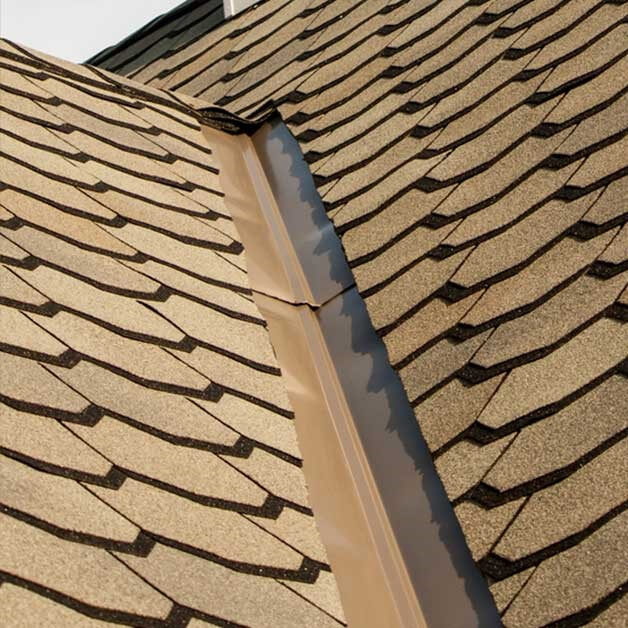Flashing Installation and Repair
Homes with chimneys require more maintenance than homes without. If you’ve recently encountered a chimney leak or noticed rust stains inside your firebox, you may need to repair your chimney flashing.
Today, we’ll go over what chimney flashing is, the signs that you should look out for to know if it’s time for a chimney flashing repair or replacement, a step-by-step look at how professionals replace flashing or preform a flashing repair, and we’ll look at the drawbacks of trying to replace flashing yourself.

Here are some of the questions we hear most frequently from our customers:
What is Chimney Flashing?
Step flashing is an L-shaped piece of metal that lies under the roofing shingles and along the brick of your masonry chimney.
Counter or cap flashing is also an L-shaped metal piece, but it is designed to cover the step flashing and embedded into a groove cut in the chimney brickwork.
Base flashing is used at the joint between a vertical surface and the roofing surface, in this case the base of the chimney, guarding against water penetration.
These parts, together with caulk create a waterproof seal.
If the chimney flashing around your chimney fails and begins to leak it could cause serious damage to your roofing, attic, and even interior rooms.
The chimney itself could even sustain damage if the chimney flashing begins to leak. As water penetrates the mortar joints between the bricks of your chimney, the chimney’s structure could become brittle and begin to crumble.
Flashing is installed at the point where your chimney meets your roof and is made out of vinyl, aluminum, copper, or steel, depending on your roofing and the surrounding climate.
Signs You Need to Repair Your Chimney Flashing
Signs it is time for a chimney flashing repair include:
- Leaking from the inside or outside of the chimney
- Sounds and evidence of dripping, like puddles
- Discolored bricks
- Rust stains
- Water stains on interior ceilings or walls adjoining the chimney
- Visible gaps in the caulking around the flashing
They say that April showers bring May flowers, but this also means lots of rain and dampness. Spring is the most common time for a chimney leak.
However, chimney leaks through the flashing can also occur in the late summer/early fall during thunderstorms and in the winter after snow on chimney tops begins to melt down the chimney walls.
One thing to be aware of when it come to leaks is if you’re noticing water inside your firebox it may not be a chimney flashing issue, it could be an issue with your chimney cap instead.
Due to most chimneys’ locations, you may not notice water damage until it has penetrated further into your roofing. If it damages the roof flashing there may be constant moisture in your attic or ceiling which can lead to wood rot and drywall damage.
How to Repair Chimney Flashing
The following process is used by chimney professionals to remove and replace chimney flashing:
- First the existing chimney flashing and shingles surrounding the chimney are removed.
- Then the base flashing is installed around the bottom of your chimney.
- Pieces of step flashing and shingles are overlapped and interweaved to redirect water away from the chimney and roof.
- The front flashing, back flashing, and side flashing are then installed.
- Finally, counter flashing is installed and caulk is applied to create a strong waterproof seal.
Should You Replace the Flashing Yourself?
Safety Precautions
You will also need all the necessary tools and supplies to correctly repair your flashing. Protective eyewear, heavy-duty gloves, and gripping boots should be worn and, in most cases, a roof jack will need to be installed.
Tools and Material Considerations
Time Considerations
Once you get the shingles removed, keep in mind that the longer your roof goes without shingles or roof flashing as you work on the repairs, the more susceptible it is to damage.
Finding an Expert to Help
While you can repair chimney flashing on your own, it isn’t easy. The best decision for you and your home is to call and schedule an appointment with Dr Chimney. Our professionals can repair your chimney flashing quickly and safely or let you know if more significant roofing issues are present.
APPOINTMENT
24-hour Dr Chimney Services
CALL US TODAY
(972) 885-6549
EMAIL US
Drchimney1@gmail.com
FIND US
5220 Spring Valley Road Dallas TX 75240
